
Plants and pets are two things that we adore in life. But unfortunately, many common plants are toxic to dogs.
Certain plants can poison pets if consumed, causing convulsions and even death. Unfortunately, even the most well-behaved dogs are likely to eat a houseplant at some point – these furry fellows can’t help it sometimes.
And according to data from the National Center for Veterinary Toxicological Information, plants are responsible for 5-6% to 11% of pet poisoning inquiries received by poison centers.
Here’s what experts say:
Poisonous plants for dogs are reasonably frequent in our homes and yards. Many dog owners are unaware that ordinary plants can cause severe ailments in their pets.
So, what’s the solution? Not to worry, here is a comprehensive list to enlighten you and every other pet owner on 18 Common House Plants Poisonous to Dogs and Non-Toxic Alternatives.
18 House Plants Poisonous to Dogs
1. Jade Plant (Crassula argentea)
Toxicity Level: low

The jade plant is such a low-maintenance houseplant that even a non-gardener can enjoy it. Because it is a succulent, it grows well on its own, even when neglected, because the leaves, like a cactus, keep moisture for a long time.
But, unfortunately, this African tropical tree is on our list of dangerous houseplants for dogs. The toxicity level of Jade plant is considered to be mild, as it typically only causes gastrointestinal upset and does not usually lead to serious health problems.
However, some dogs may be more sensitive to the plant’s toxins than others, and ingesting large amounts of the plant can cause more severe symptoms.
Other Names: Dwarf rubber plant, Baby Jade, Jade tree, Japanese rubber plant, and Chinese rubber plant
Toxin: Unknown
Poisonous plant parts: the whole plant
Symptoms: vomiting, abdominal pain, lethargy, and weakness, to name a few.

Alternative: Pet-friendly Succulents
Add some pet-friendly succulents (Burro’s Tail, Sempervivum plants, Echeverias and Opuntia species) to your countertop, and you’re set. Ensure they get lots of direct sunlight and water them lightly every two weeks.
2. Dieffenbachia
Toxicity Level: medium

It is one of the easiest houseplants to cultivate at home and is sometimes called the dumb cane. But be cautious if you have a lively dog. This plant contains a toxin and can cause damage if chewed or bitten into.
The toxins generated by this plant irritate the mucus membranes, thus, causing an allergic reaction. In some dogs, that can be fatal if not treated immediately.
Other Name: Giant Dumb Cane, Tropic Snow, Dumbcane, Exotica Perfection, Exotica, Spotted Dumb Cane, Charming Dieffenbachia.
Toxin: calcium oxalate crystals
Poisonous plant parts: the whole plant
Symptoms: intense burning and irritation of the mouth, tongue, and lips, vomiting, difficulty swallowing, and excessive drooling.

Alternative: Prayer Plant
Prayer Plant does not contain any toxins that are harmful to dogs. This makes it a safe option when selecting decorative plants for households with pets who may be tempted to nibble on the foliage.
In addition to being toxin-free, prayer plants are easy to care for and require minimal maintenance, making them one of the best pet-friendly houseplants around!
Interesting fact: Prayer Plant derives its name from its peculiar habit of raising the leaves upright at night, like how humans put their hands together to pray.
3. Aloe Vera (Aloe barbadensis)
Toxicity Level: medium
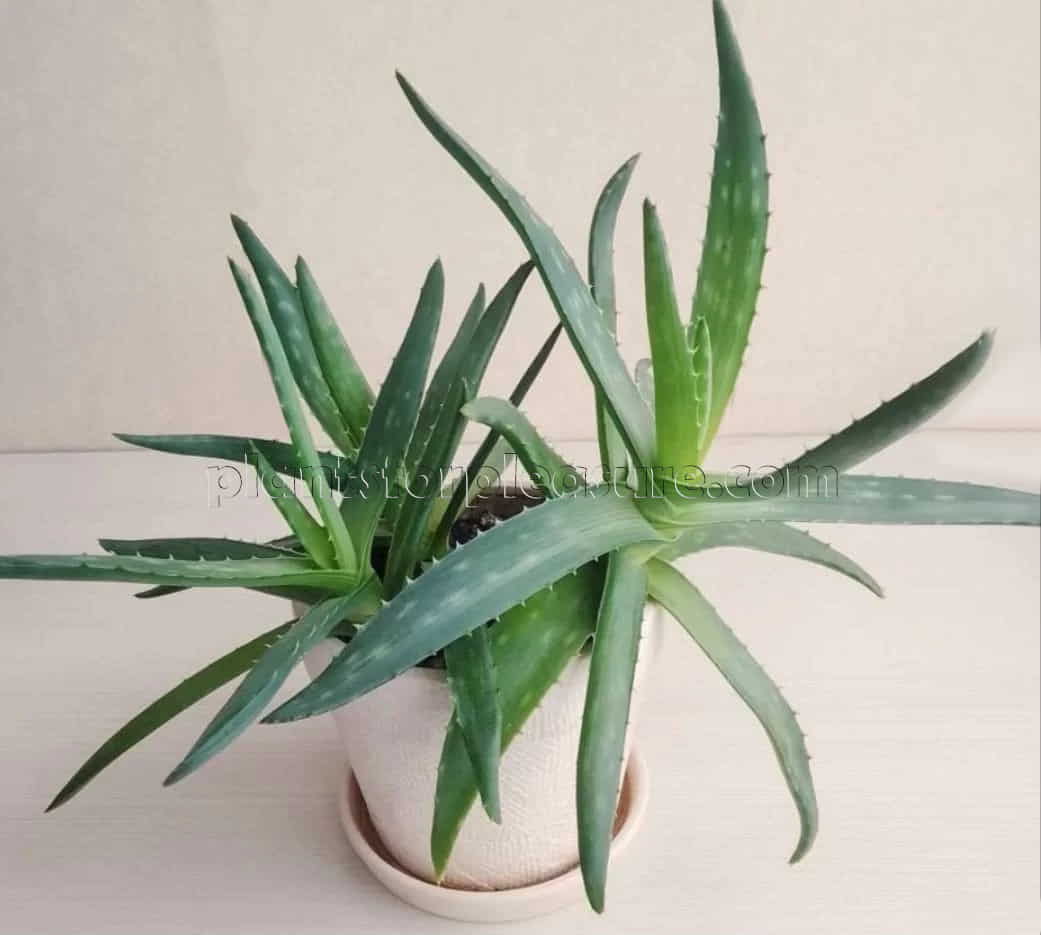
Aloe Vera is one of the most popular houseplants due to its many health benefits. This succulent boasts anti-inflammatory, antibacterial and antifungal properties that can help heal skin wounds, burns and other ailments.
However, specific components of aloe can be toxic to your dog. These can be found in aloe latex, the yellow sappy component under the rind. This latex contains aloin, a natural chemical. In big enough doses, Aloin can irritate the intestines and induce electrolyte loss.
Other Name: Barbados Aloe, Medicine Plant, True Aloe
Toxin: saponins
Poisonous plant parts: juice and pulp
Symptoms: a change in urine color (mostly red) and vomiting.

Alternative: Haworthia
Haworthia is a vast genus of small succulent plants, most of which are native to South Africa. Rosette-shaped, densely packed foliage clusters distinguish it. Also, they thrive in bright indirect to direct light.
4. Snake Plant (Sansevieria trifasciata)
Toxicity Level: medium
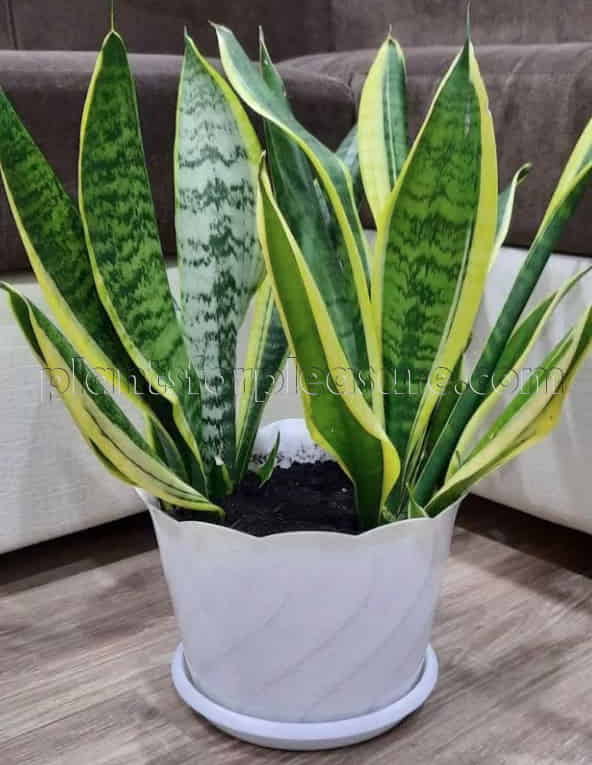
Snake plants, also known as the Sansevieria trifasciata, are typical house and office plants. Dogs chewing on any part of this indoor plant usually results in gastrointestinal symptoms.
This plant contains saponins and can induce symptoms similar to aloes, like diarrhea, vomiting, and neurological issues.
Other Name: Good Luck, Golden Bird’s Nest.
Toxin: Saponins
Poisonous plant parts: leaves
Symptoms: nausea, diarrhea, and vomiting.

Alternative: Rattlesnake Plant
The rattlesnake plant’s distinctively curved leaves and simple maintenance schedule make it an excellent complement to a low-light living room.
They flourish at a temperature range of 70 to 80 degrees F, away from direct sunlight.
5. Pothos (Epipremnum aureum)
Toxicity Level: medium

All components of this strange-looking plant can be harmful to your dog. It is toxic to all pets, including the roots, leaves, and seeds.
They’re all poisonous, and eating them can cause diarrhea, vomiting, and even liver failure for your dog.
Other Name: Golden Pothos, Taro Vine, Ivy Arum, Devils Ivy.
Toxin: Insoluble calcium oxalates
Poisonous plant parts: leaves
Symptoms: excessive drooling, vomiting, swelling of the mouth, tongue, and lips, and difficulty swallowing, to name a few.

Alternative: Spider Plant
This plant is popular among veterinarians since it is simple to grow inside and highly resilient.
Spider plants won’t thrive in bright light. Though they can withstand lower light levels, they prefer indirect bright light.
6. Cutleaf Philodendron (Monstera deliciosa)
Toxicity Level: medium
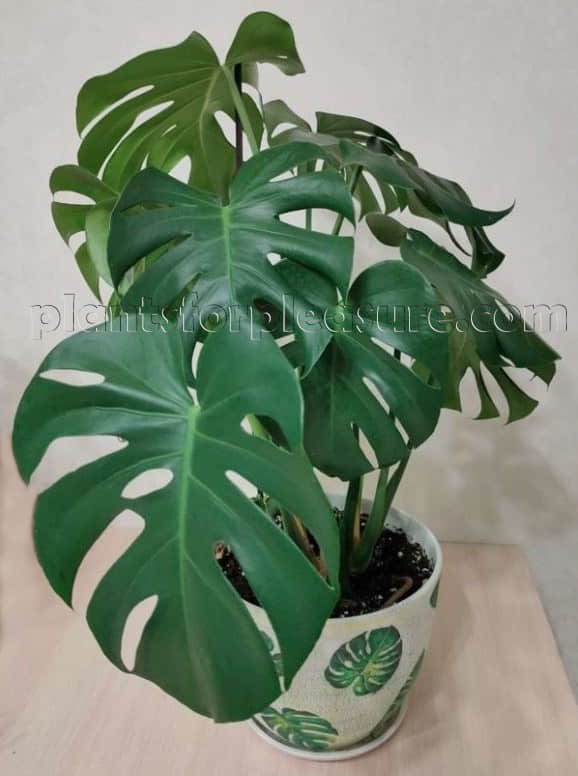
Insoluble calcium oxalate crystals are the poisonous ingredients in cut leaf philodendrons coupled with their unripe fruit.
These microscopic needles can cause significant pain and swelling in your dog’s tongue, lips, mouth, and throat.
Other Name: Ceriman, Hurricane Plant, Swiss Cheese Plant, Mexican Breadfruit
Toxin: Insoluble calcium oxalates
Poisonous plant parts: leaves
Symptoms: pain and swelling of the mouth, oral irritation, tongue and lips, difficulty swallowing, excessive drooling and vomiting.
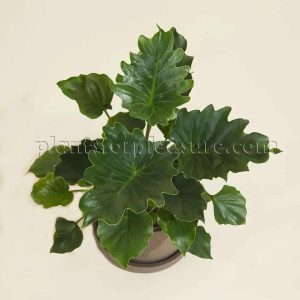
Alternative: Philodendron Selloum
Philodendron Selloum, also known as Thaumatophyllum bipinnatifidum, is a tropical plant cultivated as a common houseplant in temperate climates with gigantic, beautiful foliage. It can take heavy shadow, although it likes indirect light and moist soil.
7. Sago palm (Cycas revoluta, zamia species)
Toxicity Level: high

The sago palm is poisonous in its entirety, though the seeds (nuts) are the most dangerous to dogs and are easier for dogs to consume than the thorny fronds.
Even ingesting a tiny bit of the plant can have catastrophic consequences. It contains several poisonous chemicals. Keep your dog safe from these plants.
Other Name: Ceriman, Hurricane Plant, Swiss Cheese Plant, Mexican Breadfruit
Toxin: Cycasin, B-methylamino-l-alanine, unidentified neurotoxin (cattle)
Poisonous plant parts: Every part of the sago palm is considered poisonous, with the seeds (nuts) being the most toxic.
Symptoms: melena, increased thirst, bruising, coagulopathy, vomiting, icterus, hemorrhagic gastroenteritis, liver damage, liver failure, and worse, death.

Alternative: Parlor Palm
Place one on a cabinet or nightstand away from a window, as this palm requires only a few hours of indirect light daily. Also, keep this plant out of direct sunlight.
8. Amaryllis (Amaryllis spp.)
Toxicity Level: Medium

Lycorine and other toxic compounds found in Amaryllis can cause drooling (increased salivation) and gastrointestinal disorders such as decreased appetite, vomiting, diarrhea, and lethargy in dogs.
The plant’s bulb is said to be more hazardous than the blooms and stalk.
Other Names: Belladonna lily, Saint Joseph lily, Cape Belladonna, and Naked Lady, to name a few.
Toxin: Lycorine and others
Poisonous plant parts: The leaves, stems, and bulbs contain phenanthridine alkaloids, which can cause vomiting, low blood pressure (hypotension), and respiratory depression.
Symptoms: abdominal pain, depression, diarrhea, tremors, anorexia, vomiting

Alternative: Christmas Cactus
Choosing this cute plant is a great way for pet owners to brighten up their homes while keeping their pets safe.
When they bloom, Christmas cactus plants produce gorgeous, tubular flowers in white, lilac or pink colors. But, more importantly, they aren’t harmful to dogs.
9. Dracaena (Dracaena spp)
Toxicity Level: Medium
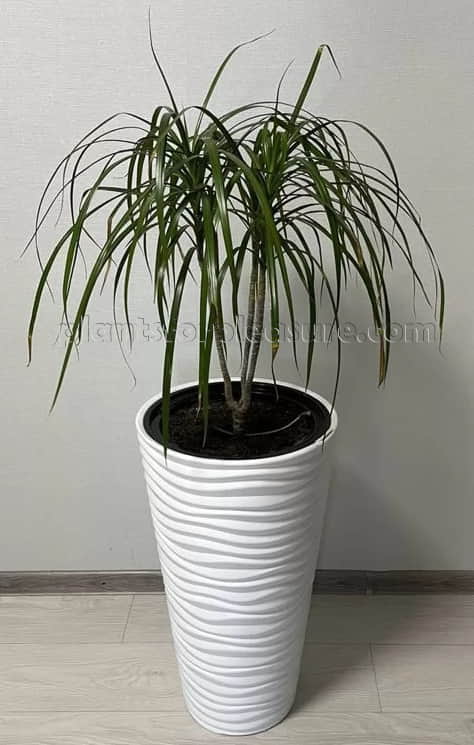
Saponins, toxic substances found in dracaena, are poisonous to your pets. If a dog eats its leaves, it can lead to vomiting, weakness, diarrhea, drooling, and loss of appetite.
The good news is that your pet’s chances of recovery after ingesting a mild dosage are excellent.
Other Name: Corn Plant, Dragon Tree, Cornstalk Plant, Ribbon Plant
Toxin: Saponins
Poisonous plant parts: leaves
Symptoms: depression, vomiting, anorexia, and hypersalivation.

Alternative: Money Tree
Money trees, also known as Pachira Aquatica, have long been associated with good fortune and prosperity. It is an excellent indoor foliage plant for creating a tropical atmosphere. It has a braided stem and brilliant green palm-like leaves.
10. Arrow-Head Vine ( Syngonium podophyllum)
Toxicity Level: Medium

Like other Araceae family plants, Arrow-Head Vine has insoluble oxalate crystals. These calcium oxalate crystals cause significant pain and irritation to the mouth and gastrointestinal tract.
Other Name: Green Gold Naphthysis, Nephthytis, Trileaf Wonder, African Evergreen.
Toxin: Insoluble calcium oxalates
Poisonous plant parts: leaves
Symptoms: vomiting, pain and swelling of mouth, tongue, and lips, difficulty swallowing, and excessive drooling.

Alternative: Wax Plant
The Wax Plant’s long, thin tendrils are clothed with thick, green leathery leaves. To highlight its thickly-leafed vines and make them appear denser.
11. Asparagus fern (Asparagus densiflorus cv sprengeri)
Toxicity Level: low

Asparagus Fern contains sapogenin; a steroid found in different plants. If your dog chews on its berries, vomiting, diarrhea, and gastrointestinal pain can occur.
Other Names: Asparagus, Emerald Feather, Emerald Fern, Sprengeri Fern, Plumosa Fern, Lace Fern, Racemose Asparagus, Shatavari.
Toxin: sapogenin
Poisonous plant parts: all parts
Symptoms: Berry ingestion could result in a gastric upset, including vomiting, diarrhea, or abdominal pain. Ingesting the sap can induce a contact rash as well.

Alternative: Boston Fern
The Boston Fern is a well-known fern that grows in various tropical places worldwide. It is a classic houseplant in North America and is simple to care for because it does not require much sunshine.
12. Begonia (Begonia spp.)
Toxicity Level: Medium

Although it’s worth noting that Begonias’ most toxic parts are situated in its lower section (root area), it’s still best to keep them out of reach of your dogs.
Fortunately, it’s not a severe problem unless your furry friend ate much of it. It is poisonous but weak, and symptoms often include trouble swallowing, drooling, and vomiting.
Other Name: There are more than a thousand species of this plant and ten thousand hybrids.
Toxin: Soluble calcium oxalates
Poisonous plant parts: root area
Symptoms: vomiting and salivation.

Alternative: Calathea Orbifolia
The leaf pattern on the Calathea is stunning. Calatheas dislike the sun, but a regular watering routine will keep your plant healthy and hydrated.
13. Bird of Paradise Flower (Strelitzia reginae)
Toxicity Level: low

The bird of paradise, also known as the crane flower plant, is a tropical flowering plant that looks like a bird in flight.
Toxins in this plant cause gastrointestinal distress. If your dog ingests it, some symptoms to look out for include vomiting, diarrhea, and other signs of digestive upset.
Other Name: Bird’s Tongue Flower, Crane Flower.
Toxin: GI irritants
Poisonous plant parts: fruit and seeds
Symptoms: vomiting, mild nausea, and drowsiness.
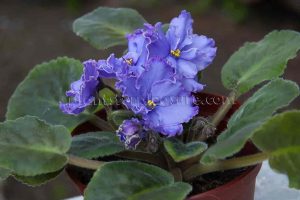
Alternative: African Violet
These flowers would be an excellent, colorful addition to the open shelf in your kitchen. They will require modest watering. Because they can bloom all year, you should fertilize them regularly.
14. Caladium (Caladium hortulanum)
Toxicity Level: Medium

Caladium is a houseplant with heart-shaped leaves that resemble wings. Chewing on it (caladium) produces significant discomfort and swelling of the lips, tongue, and throat as calcium crystals induce soft tissue injury in dogs.
Other Name: Elephant’s Ears, Mother-in-law Plant, Pink Cloud, Texas Wonder, Angel-Wings, Exposition, Candidum, Fancy-leaved Caladium, Stoplight, Seagull.
Toxin: Insoluble calcium oxalates
Poisonous plant parts: leaves
Symptoms: irritation, tongue, excessive drooling, difficulty swallowing, vomiting, pain, and swelling of mouth, tongue, and lips.

Alternative: Peperomia Caperata
Peperomia Caperata is a small houseplant with heart-shaped, strongly ridged leaves. In the winter, water less often and allow the top half of the soil to dry before watering again.
15. Chinese Evergreen (Aglaonema modestum)
Toxicity Level: Medium
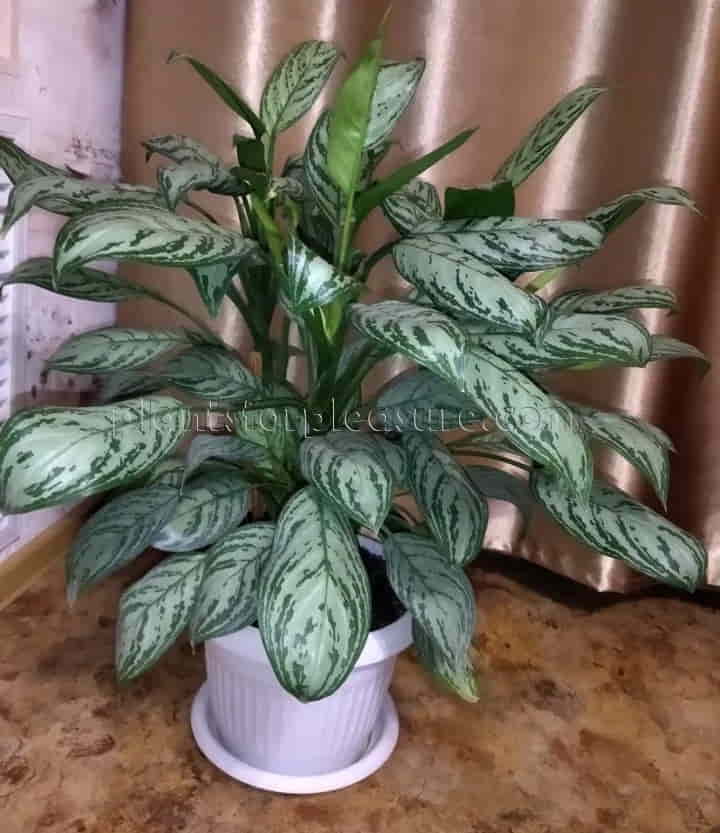
The Chinese Evergreen plant is highly toxic not just to dogs but to you as well. Ingesting it will cause mouth and stomach irritation and possible vomiting.
And in some cases, it may even cause upper airway swelling. So, keep away, not just from your furry friend but from yourself too.
Other name: Aglaonema, Diamond bay, Emerald bay, Moonlight bay, Stripes
Toxin: Insoluble calcium oxalates
Poisonous plant parts: leaves
Symptoms: Swelling of mouth, tongue, and lips, oral irritation, excessive drooling, and vomiting.

Alternative: Bird’s Nest Fern
Most people associate ferns with fluffy, airy fronds, but this is not true for all ferns. The bird’s nest fern is an example of a fern that challenges our assumptions about what a fern should look like.
16. Kalanchoe (Kalanchoe spp)
Toxicity Level: low

Kalanchoe is one of the plants that possess cardiac poisons. Ingestion by dogs, on the other hand, typically leads to gastrointestinal irritation or distress.
Meanwhile, the flowers are the most dangerous part of the plant because they contain the most cardiac glycosides.
Other Name: Devils Backbone, Mother-In-Law-Plant, Chandelier Plant, Mother of Millions
Toxin: Bufodienolides
Poisonous plant parts: leaves
Symptoms: diarrhea, vomiting, and abnormal heart rhythm.

Alternative: Venus Flytrap
This attractive plant is poisonous to small insects but safe for pets. It is also extremely low-maintenance. Venus Flytrap requires at least four hours of direct sunlight and pure water to thrive.
17. Anthurium (Anthurium scherzeranum)
Toxicity Level: Medium

If your dog eats a painter’s pallet plant (it could be the leaves or stems), that dog might experience gastrointestinal issues.
Also, the inflammation produced by its crystals could be a severe adverse effect to look out for.
Other Name: Flamingo Lily, Tail Flower, Flamingo Plant, Oilcloth Flower, Flamingo Flower, Pigtail Plant
Toxin: Insoluble calcium oxalates
Poisonous plant parts: all parts
Symptoms: Excessive drooling, vomiting, difficulty swallowing, intense burning, and irritation of the mouth, tongue, and lips.

Alternative: Gloxinia
Find a bright window, and these flowers bloom in vibrant colors: blue, pink, purple, or red. For best health, keep the soil moist and feed them every two weeks.
18. Poinsettia (Euphorbia pulcherrima)
Toxicity Level: low

Poinsettias are minimally harmful to dogs, so the symptoms will be mild if your pet consumes part of it. However, it contains a sap that can irritate dogs’ skin when they come into contact with it.
Other name: Euphorbia, lobster flower, flame leaf flower, Flower of the Holy Night, Flower of Christmas Eve, Crown of the Andes, Easter flower
Toxin: euphorbol esters and saponin-like detergents
Poisonous plant parts: The milky white sap
Symptoms: irritation to the mouth and stomach.

Alternative: Bromeliad
Although there are many bromeliad species, none of them are poisonous or hazardous to humans or pets. It thrives in indirect light to direct light. Some, such as the spikiest Neoregelia types, can withstand more direct sunlight than others.
If you’re ever unsure whether a particular plant is toxic or non-toxic for your dog, the ASPCA offers a comprehensive list of plants to avoid.
Conclusion
So, what do you think? Did you enjoy my list? Curating this comprehensive list of 18 common house plants poisonous to dogs and non-toxic alternatives has helped me further understand how to keep my furry friend safe. I’m sure that it will serve the same purpose for you, the reader.
If you enjoy this piece, feel free to comment in the comment section below and share it with your friends, families, and others online.
FAQs
My dog ate a poisonous plant. What should I do?
Contact your veterinarian immediately since your dog may require activated charcoal to bind the poisons. Induce vomiting only if your veterinarian recommends it.
Are Lilies poisonous to dogs?
Yes, Lilies are dangerous to dogs. Avoid lilies in general when selecting plants for your garden or indoor decor. While not all lilies are particularly toxic to dogs, most of them can induce stomach discomfort or other unpleasant symptoms.
What succulents are poisonous to dogs?
The types of succulents that are poisonous to dogs include:
– Panda plant
– Sago palm
– Euphorbia
– Pencil cactus
– Silver jade
– Snake plant
– String of pearls
– Kalanchoe
– Jade
– Aloe
Disclaimer
The content of this page is not veterinary advice and should not be used to diagnose or treat any medical condition. If you are concerned about your pet’s health, it is strongly recommended that you contact your veterinarian for professional medical advice.

Author
Susan is a plant lover with over 10 years of experience caring for houseplants. She enjoys watching her plants thrive and sharing her knowledge with others. As the writer for this website, Susan offers simple, practical tips to help readers grow happy and healthy plants.






